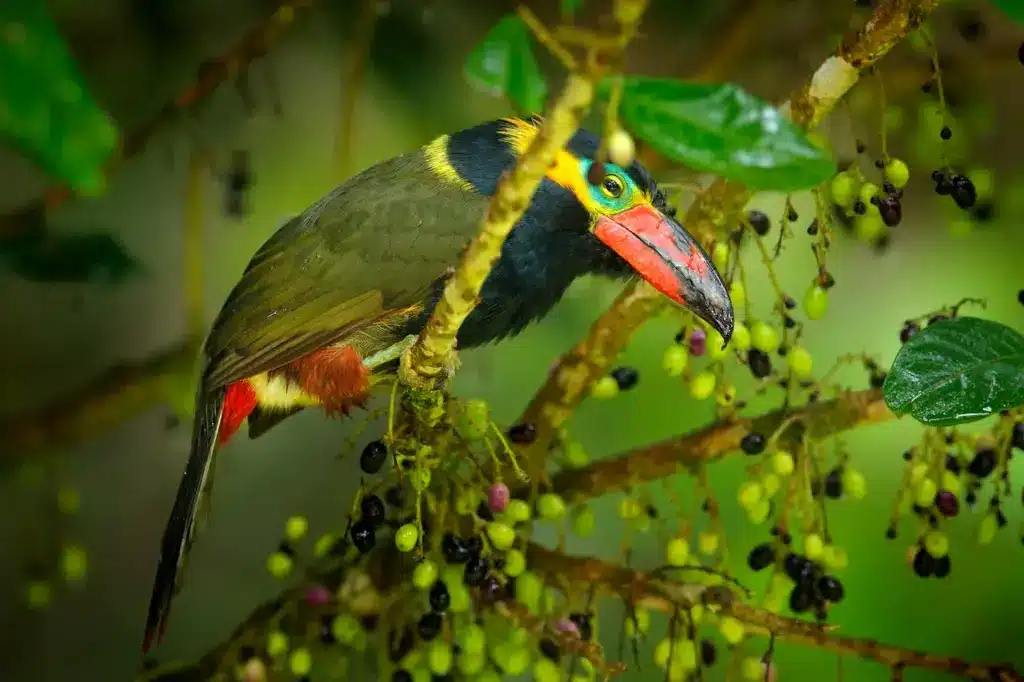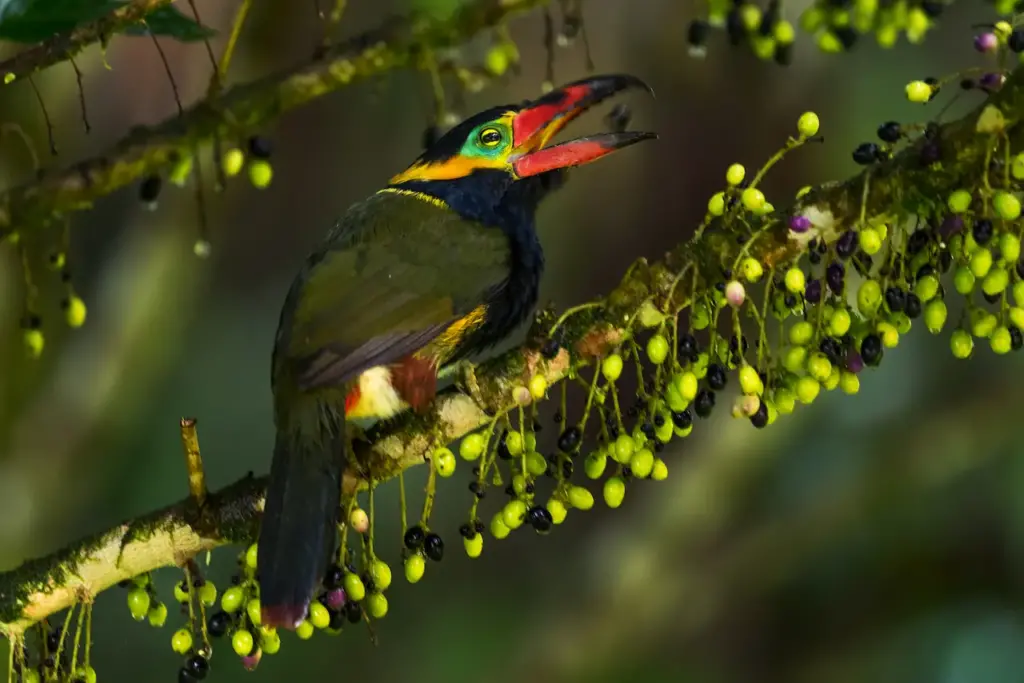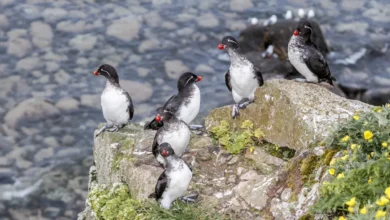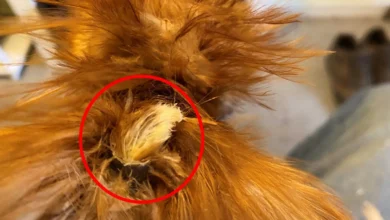The Golden-collared Toucanets (Selenidera reinwardtii) or Reinwardt’s Toucanet – is a toucan found in the western Amazon rainforest in South America. It includes the Langsdorff’s or Green-billed Toucanet (Selenidera reinwardtii langsdorffii) as a subspecies, but it was formerly considered a separate species.

Alternate (Global) Names
Chinese: ?????? … Czech: Arassari límcový … Danish: Pragttukanet … Dutch: Reinwardt-pepervreter, Reinwardts Pepervreter … German: Reinwardt Arassari, Reinwardtarassari, Reinwardt-Arassari … Finnish: Tiilinokkatukaani … French: Araçari de Reinwardt, Toucanet de Reinwardt … Italian: Tucanetto dal collare, Tucanetto di Reinwardt … Japanese: akahashikochuuhashi … Norwegian: Rødnebbtukan … Polish: tukanik czarnopiersny, tukanik czarnopier?ny … Portuguese: araçari-poca-de-bico-laranja, Sapiroca-de-coleira, Saripoca-de-coleira … Russian: ???????????? ?????????? … Slovak: tukaník divnooký … Spanish: Pichilingo Aserrador, Tucancillo Collaridorado, Tucancito de Pico Rojo, Tucanete de Reinwardt … Swedish: Reinwardttukanett
Distribution / Range
The Golden-collared Toucanets are found in the western part of the Amazon Basin
Subspecies and Distribution:
- Golden-collared Toucanet (Selenidera reinwardtii Wagler, 1827)- Nominate Race
- Range: East central and southeastern Colombia (along Brazil border), south to eastern Ecuador and central north and northeastern Peru.
- ID: The nominate Golden-collared Toucanet has a maroon-red bill.
-
- Langsdorff’s Toucanet or Green-billed Toucanet (Selenidera [reinwardtii] langsdorffii – Wagler, 1827)
- Sometimes considered a separate species; but interbreeds with the nominate race in northern Peru (upper Ucayali and Huallaga rivers), where these two species intergrade.
- Range: North Central and Eastern Peru. Western Brazil, south to the Solimões River, to the Purus River and likely upper Madeira River, south to northwestern Bolivia, west of the Beni River.
- ID: The Langsdorff’s Toucanet has a broadly black-tipped bluish-grey bill.
- Langsdorff’s Toucanet or Green-billed Toucanet (Selenidera [reinwardtii] langsdorffii – Wagler, 1827)

Description
Like other members of the toucan family, the Golden-collared Toucanet has distinctive plumage and a large brightly coloured bill. It resembles the related Spot-billed, Tawny-tufted and Gould’s Toucanets.
The two races can be identified by the different colours of their bills (as described above).
Breeding / Nesting
The mating ritual is a fun-loving affair for toucans, as they throw fruit to one another.
Like all of their other activities, nesting happens high up in hollow areas in trees. The bill is not effective for digging or any other type of extensive excavation work and so they must rely on holes already formed by other means.
The nests are not lined, but the two to four shiny white eggs that are laid each year rest on a few wood chips created while enlarging the opening or on various kinds of regurgitated seeds collected for this purpose.
Parents share equally in incubation duties but rarely sit on the nest for more than an hour at a time and the eggs are often left uncovered. Both parents share in feeding fruit to the babies for up to 8 weeks.
After 16 days the nestlings are born blind, with no trace of down on their pink skin. The bill is unremarkable until about 16 days old when it takes on the distinguishing features of the toucan and requires up to four months to develop fully. Feathers begin to expand at 4 weeks.
Babies have pads on their elbows that protect their feet by keeping them elevated until they fledge.
Breeding in captivity requires attention to several details. Even successful breeders report rates as low as 30% for the incubation of eggs.



